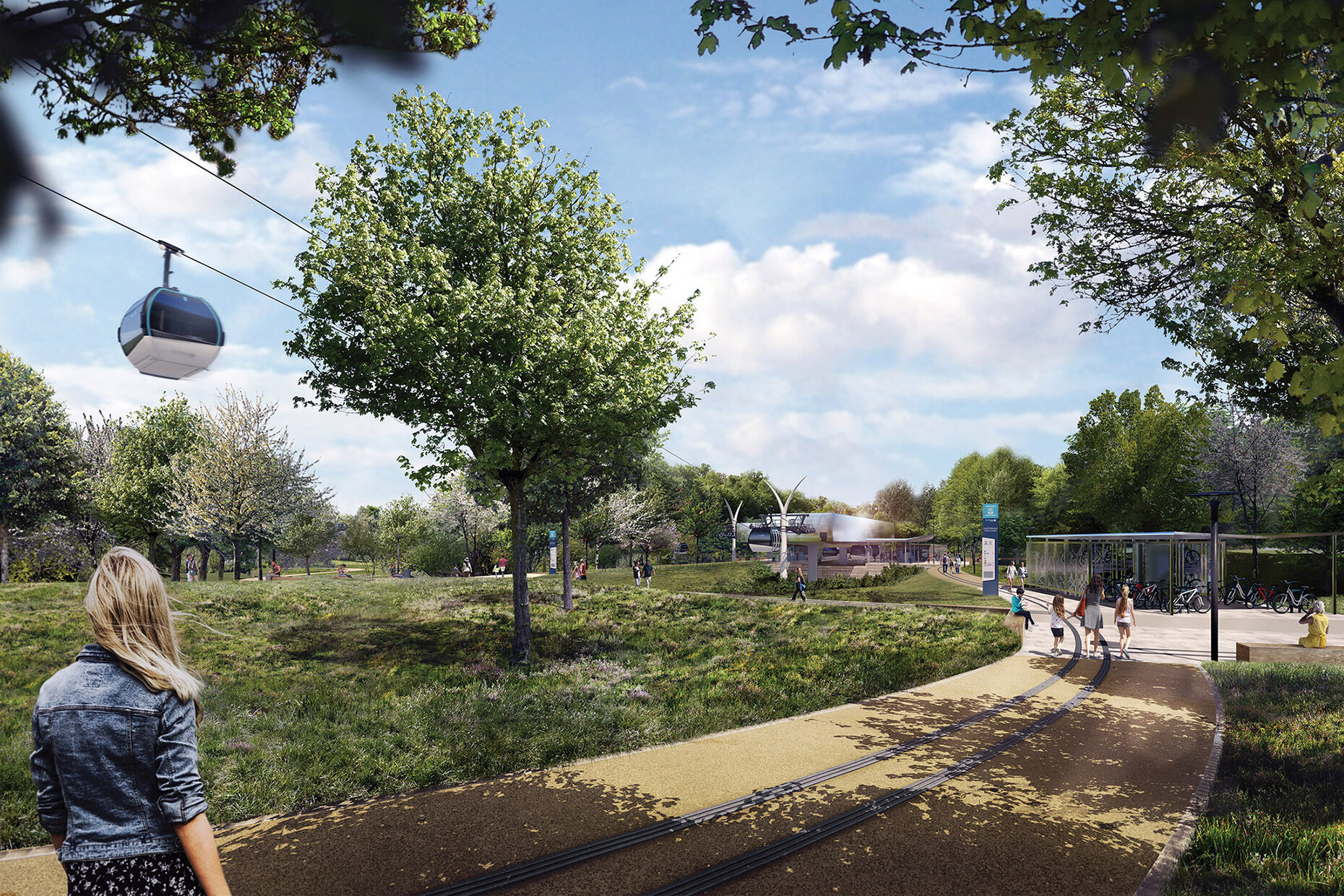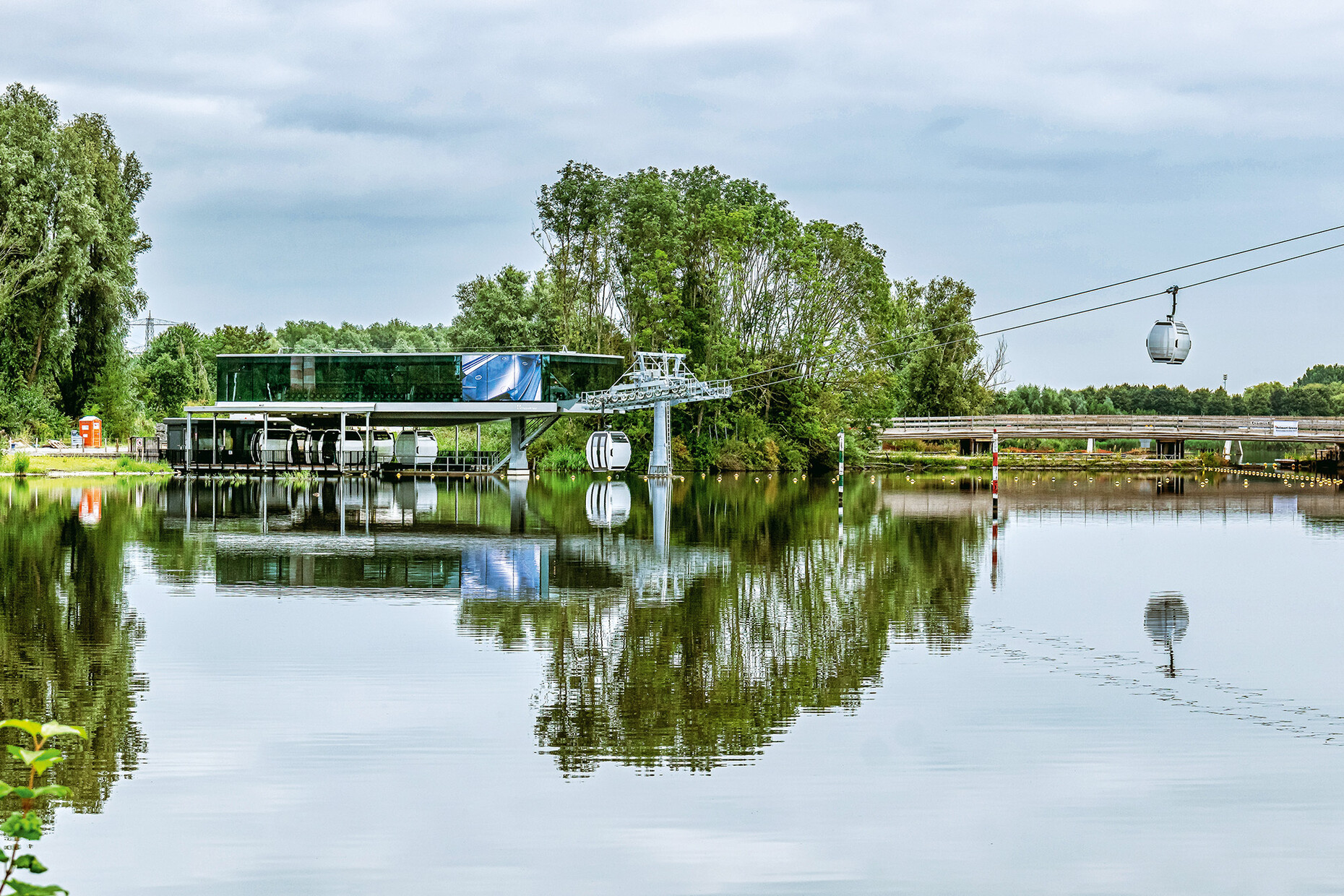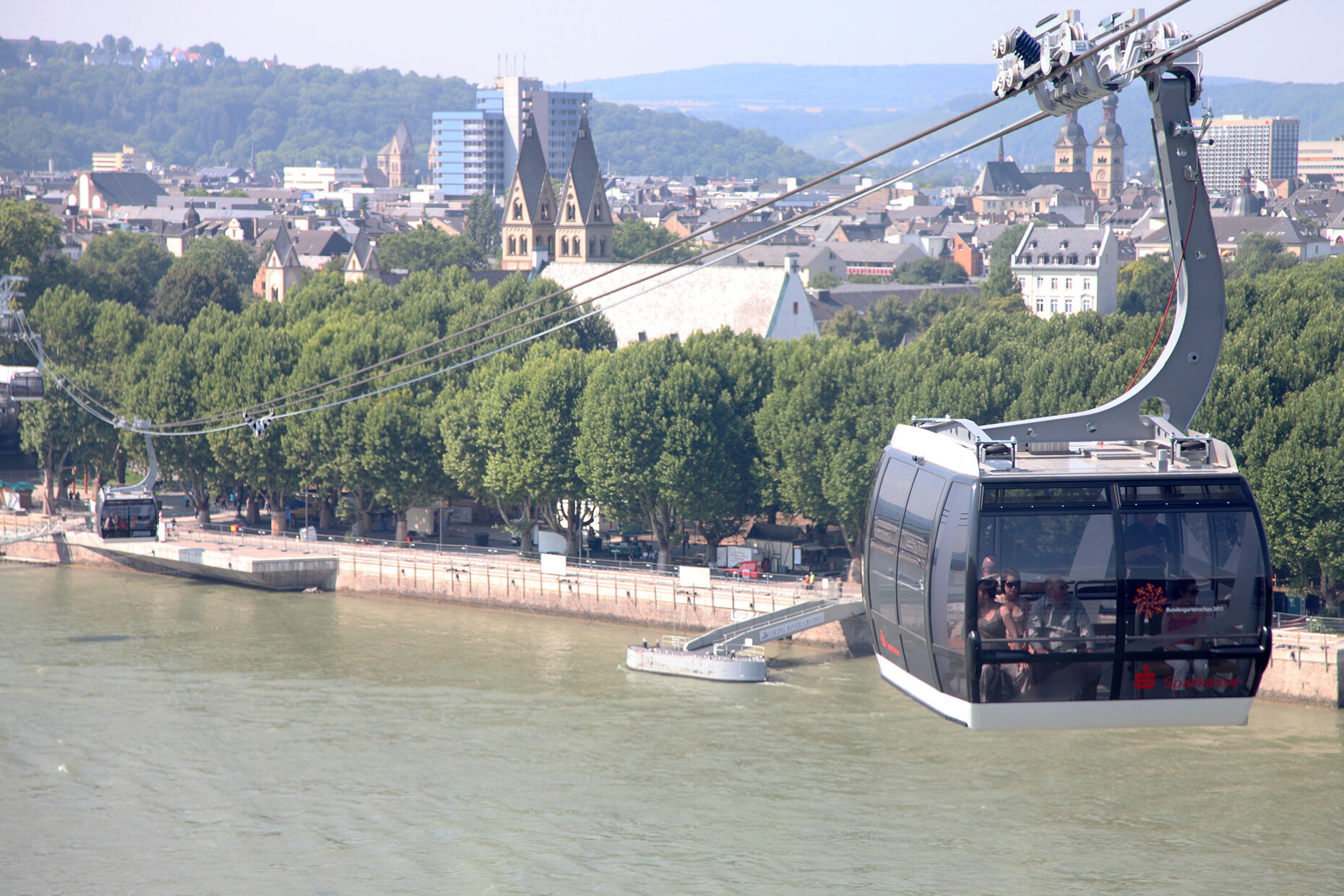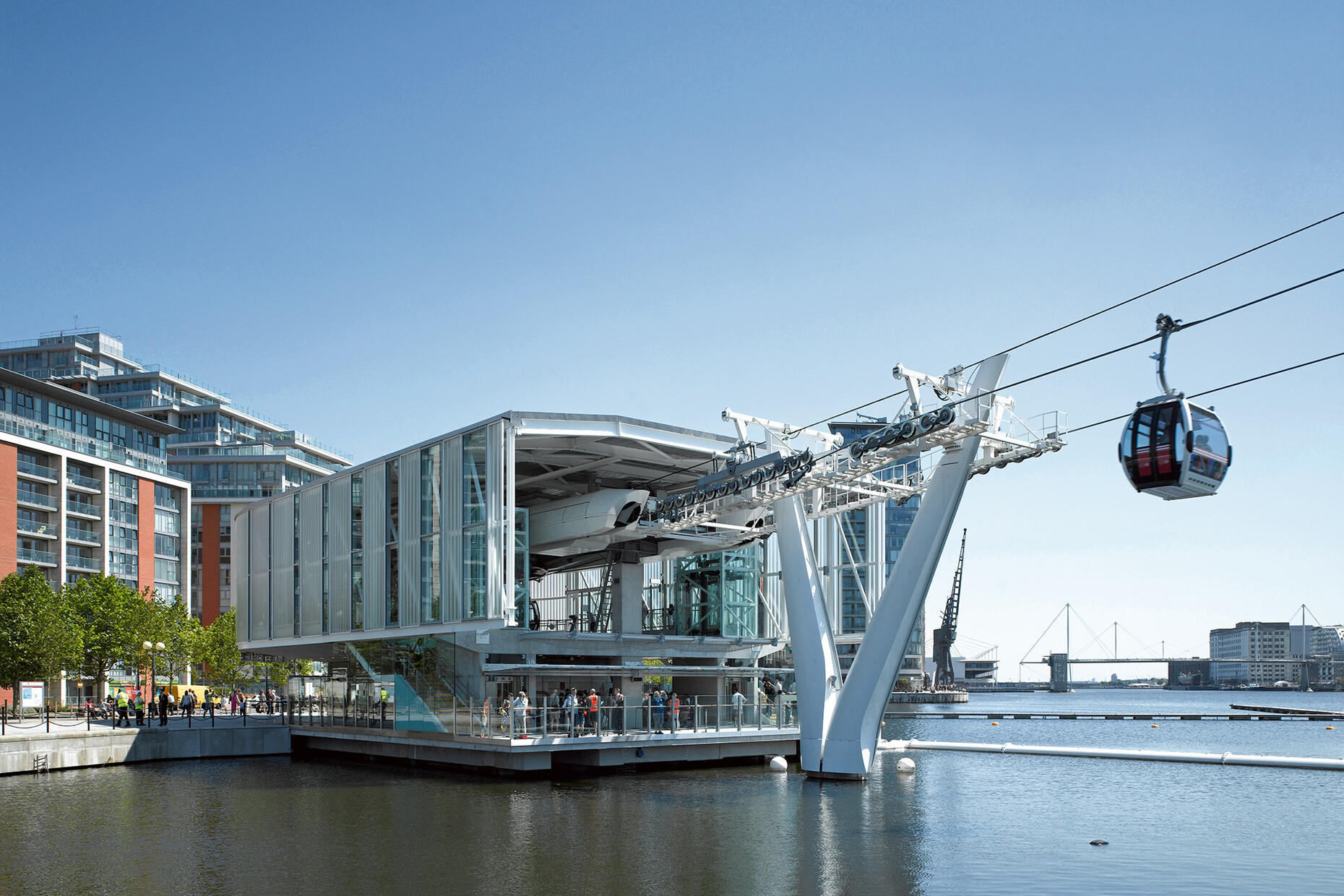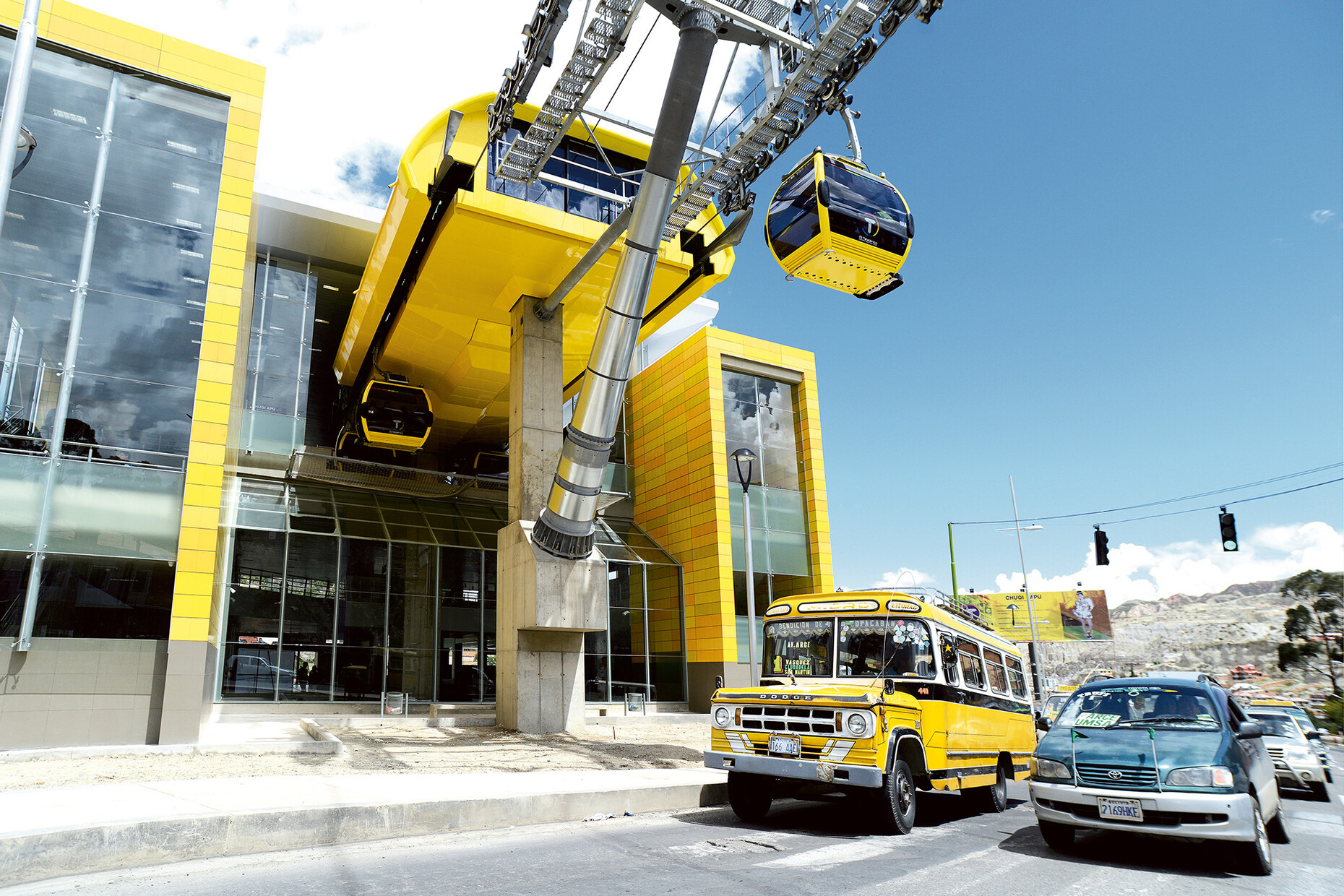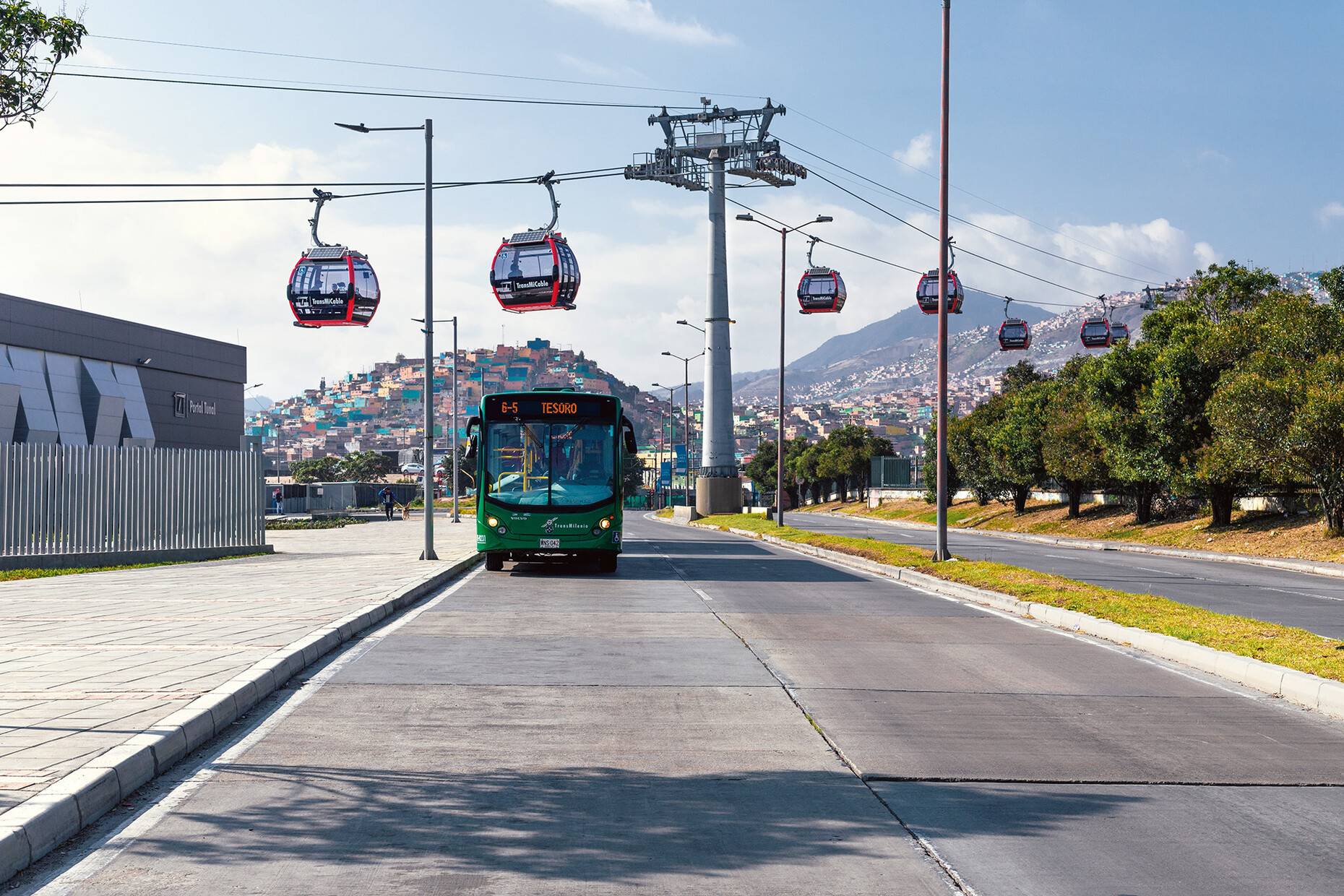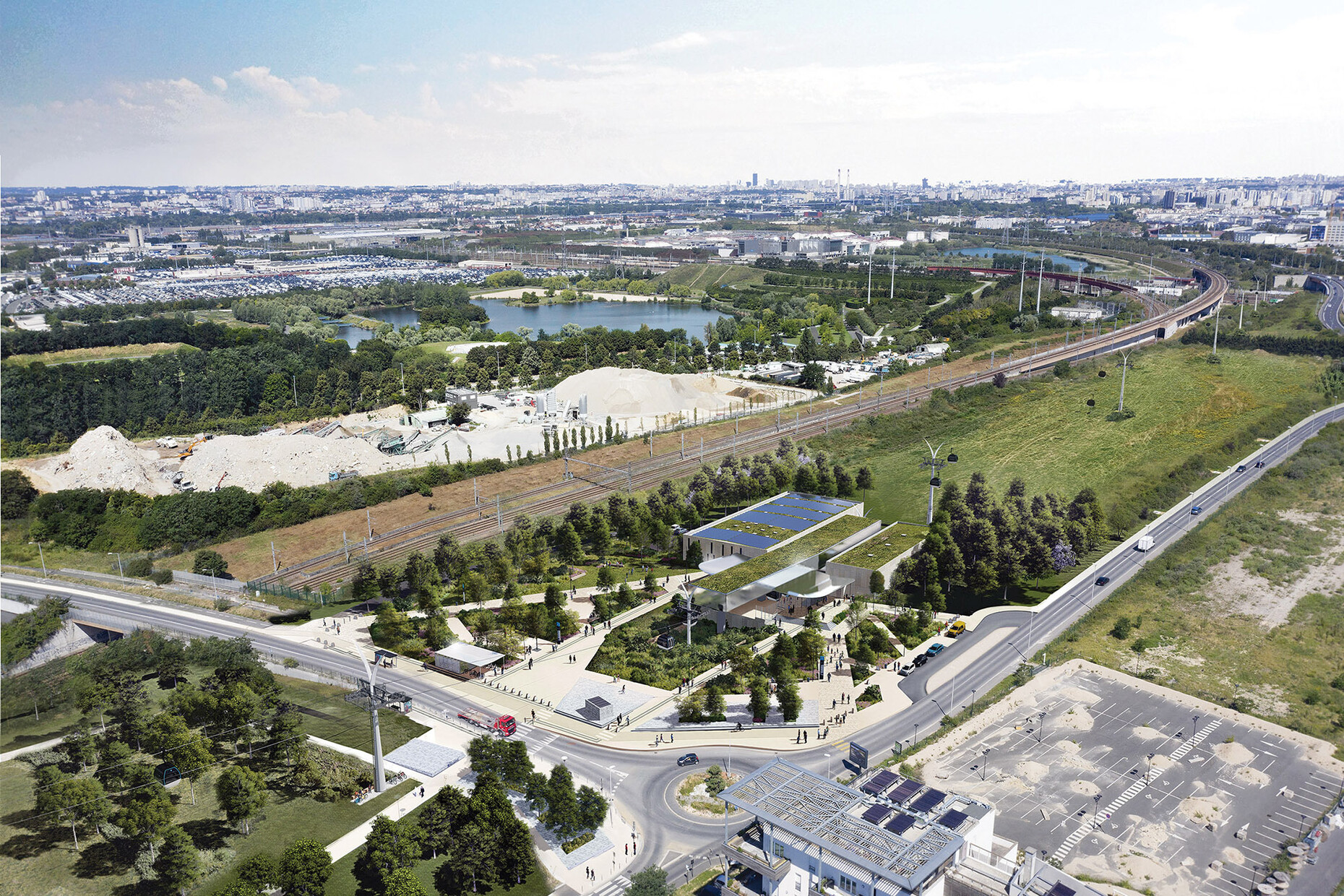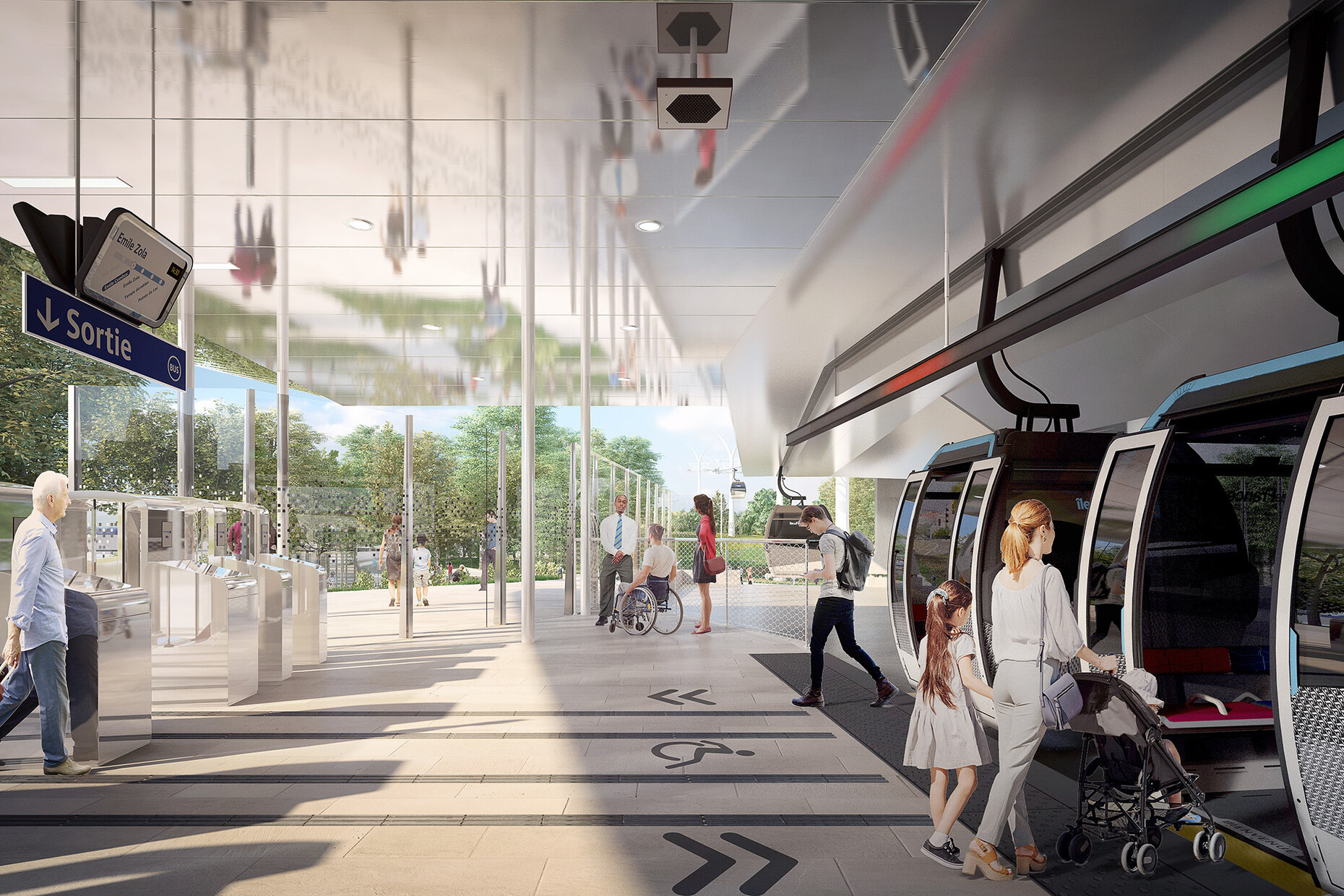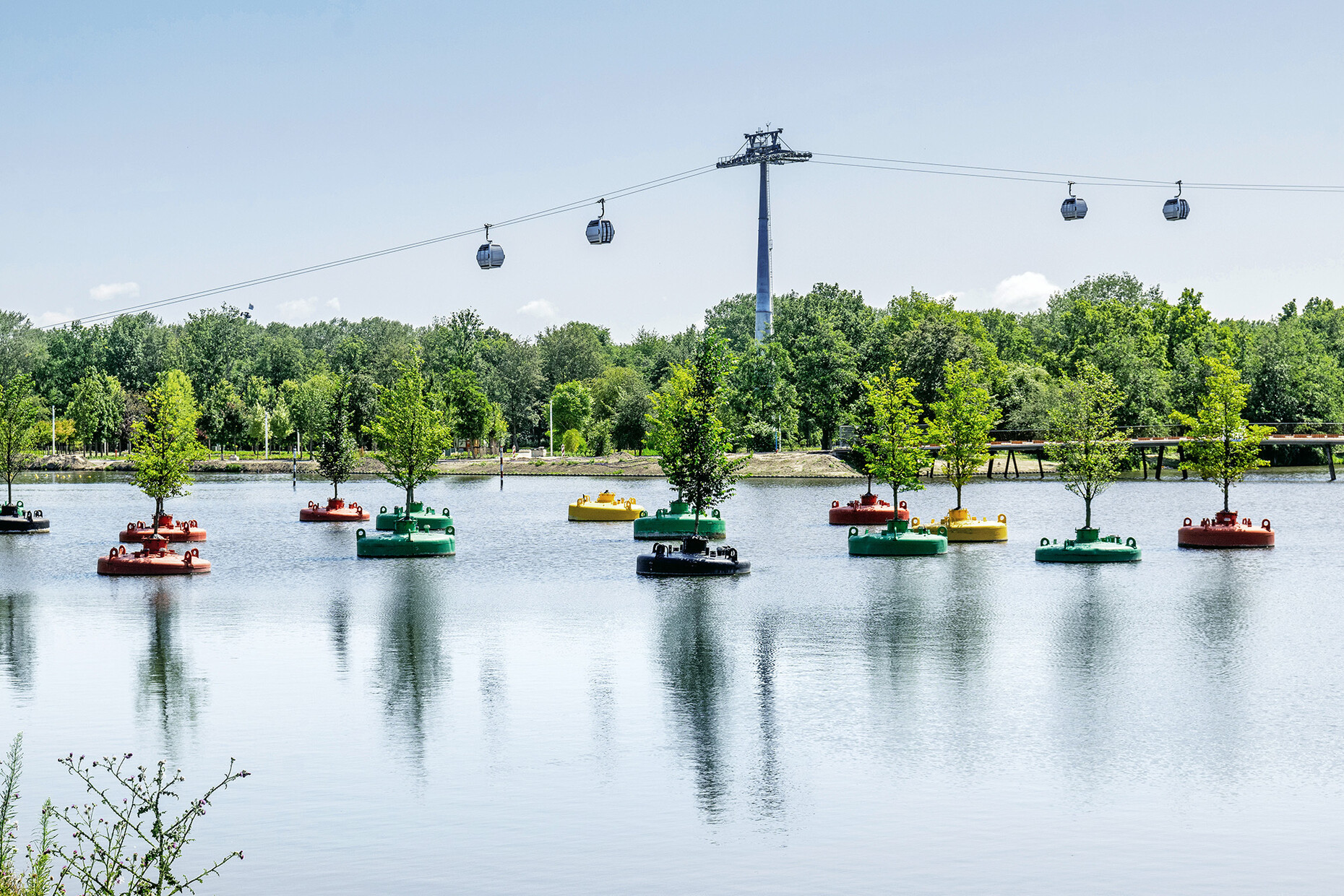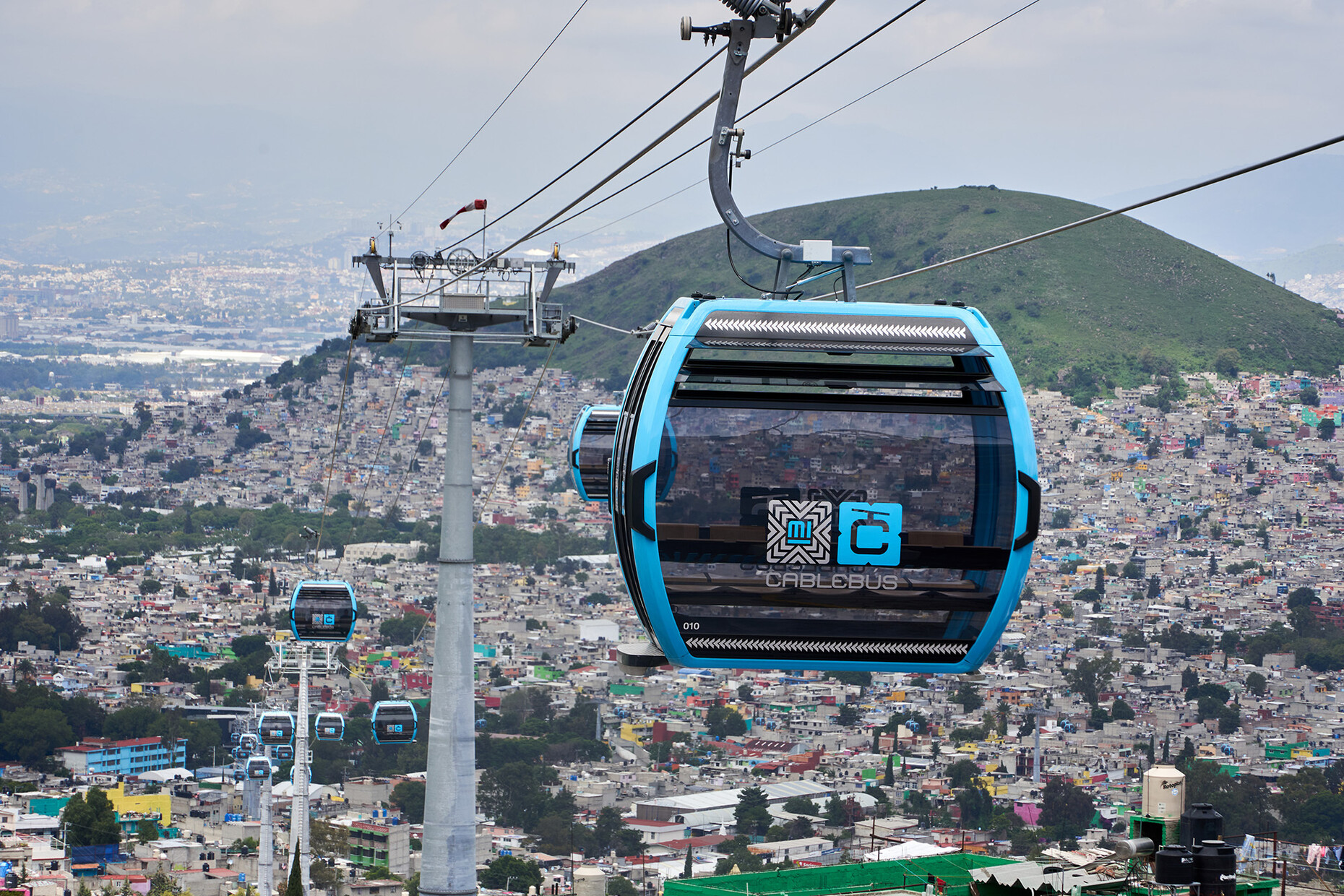New Forms of Connectivity
Alexander Russ: Aerial tramways are more commonly associated with tourism, for example for use at ski resorts. Why are they also suitable for cities?
Reinhard Fitz: Aerial tramways have unique attributes. First, they have a very small footprint. This is a major advantage in an urban context, where buildable property is usually in short supply. A second attribute is that such tramways can easily float over obstacles that would otherwise require more difficult and expensive infrastructure solutions such as bridges or tunnels. Another crucial attribute of aerial tramways is that they're very efficient, and even public buses that run frequently can't match their transport capacity.
How can aerial tramways be meaningfully integrated into an existing urban transport network?
Reinhard Fitz: You have to take a close look at the transit area in question before doing anything else and analyse the connections between the source and destination. Trying to go beyond existing transit routes and looking for new connections can bring about a reduction in both distances travelled and traffic congestion. It's also very important to ensure a seamless transition between the various modes of transport.
Can you give me an example of this?
Reinhard Fitz: Aerial tramways can overcome obstacles such as railway lines in order to get from point A to B more quickly. For example, you could build one above a metro railway station to complement the existing system, thus offering a seamless transition between different means of transport, lessening distances to be travelled and transfer problems.
Getting approval of aerial tramway projects in an urban context is often a difficult undertaking. What are the concerns here from urban planning and architectural points of view?
Reinhard Fitz: Our experience has been that every kind of infrastructure project faces the same challenges: Ideas about improving a transit system encounter resistance from local residents and/or the public when it comes to actually implementing them. Early communication and transparency are therefore essential and the public needs to be involved in a participation process. Of course an aerial tramway as a means of transport in an urban context seems unusual at first – but once it's in operation it's very well accepted. Harmonious integration into the cityscape as well as functional architecture both help to increase public acceptance.
How quiet are aerial tramways in operation, for example when they're used in a residential area?
Reinhard Fitz: Modern aerial tramways are very quiet. The systems have been constantly optimised in this respect over the last few years. Decoupling the individual components from one another has lead to a reduction of noise emissions.
The topic of "Connected Intelligence", i.e. sensor-based, digital and decentralised traffic control, is becoming increasingly important in traffic planning. What can aerial tramways do in this respect?
Reinhard Fitz: At Doppelmayr/Garaventa we have developed AURO (Autonomous Ropeway Operation) for this purpose. This system monitors the entry and exit of passengers. The whole thing is based on an error analysis in which the behaviour of the users was closely examined in order to identify relevant problems at an early stage and to prevent operational shutdowns as far as possible. An example would be that a passenger has a problem when boarding. The system then intervenes and delays the onward journey so that there's more time to solve this problem. Such a system also ensures greater cost efficiency in operation because it allows for a reduction in personnel, which is of course not entirely unimportant in public transport. Day to day operations can thus be carried out in a much more cost-effective way.
Your "Eiger Express" aerial tramway station connects various modes of transport such as a railway, gondola and tricable gondola, as well as material logistics. It also houses restaurants and shops. Similar plans exist in urban areas as well, with the concept of so-called mobility hubs. How can such a project be transferred to the urban context?
Reinhard Fitz: In principle, the "Eiger Express" is also a mobility hub, although it's not located in an urban context. Directly connected to the railway, visitors to the Jungfrau region can now travel directly along the Eiger North Face to the Jungfraujoch train lines's Eiger Glacier station. The Eiger Express thus takes pressure off the train route to the Eiger Glacier, and, by reducing travel time, offers guests the opportunity to stay longer in this mountain region. At the same time, it optimises logistics processes, as there are both cabins for passengers and for the transport of freight. A mobility hub is basically the same thing, i.e. a service point that provides users with multimodal mobility combined with services. In the urban context, this would be, for example, an e-charging station for bicycles or a return station for e-scooters combined with a parcel delivery station.
A good example is your Câble 1 project in Paris, which is scheduled to go into operation in 2025. There you're planning a 4.5-kilometre-long aerial tramway connection with five stations that will connect a variety of metro and bus stations. Can you tell us more about the project?
Reinhard Fitz: Our project in Paris will help connect two neighbourhoods to the metro line. At the same time, the aerial tramway will also serve as a connecting element between the two neighbourhoods, as it bridges large railway tracks. Various facilities such as hospitals and schools will thus be better integrated into the overall transit network. In addition, new services will be offered at certain transport hubs. This will shorten distances within the respective neighbourhoods, which in turn enables certain forms of micromobility such as the use of scooters and bicycles. This will then also affect future urban planning, where planners need to increasingly think about which traffic flows exist in the city and how these can be optimised with the help of new mobility solutions and digitalisation.
Another of your projects is the international horticulture exhibition Expo Floriade in Almere, which sees itself as a showcase for sustainable urban planning and is accessed by a Doppelmayr/Garaventa aerial tramway. To what extent does the development here contribute to the Expo Floriade's approach to sustainability?
Reinhard Fitz: The aerial tramway at Expo Floriade is an example of how an optimal infrastructural connection is possible with a very small footprint. Visitors coming from outside the city do not have to go through the centre of Almere, but can transfer directly from a bus or car to the aerial tramway. It spans the motorway and at the same time offers passengers a special experience as they float over the Expo Floriade site in a gondola, giving them an overview of what the exhibition has to offer. In addition, the whole system can be easily dismantled and reassembled due to its modular character. This opens the possibility of reusing parts of it for the Mannheim 2023 National Garden Show.
Doppelmayr/Garaventa has also built urban aerial tramway projects in Central and South America, such as the Cablebús Línea 1 project in Mexico City. How do projects in Central and South America differ from a project in Europe?
Reinhard Fitz: In Mexico City, the focus was very much on improving social inequality by implementing new infrastructure. The residents of the Cuautepec neighbourhood were to have better access to public transport. The time factor was also very important, for example, we had to guarantee that the aerial tramway would be built in 18 months. All in all, the entire process took only two and a half years, whereas planning and approval processes in Europe take much longer. But the time-related efficiency of implementing a cableway remains the same, especially when you compare the whole thing to building an underground system. And the more examples there are of successful aerial tramways in cities, the clearer the responsibilities and the shorter the approval times will be.
